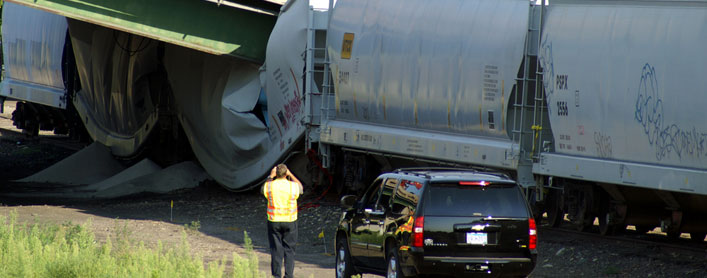CASE STUDIES
Dickson-Schaefer has encountered a wide variety of issues during our work preforming forensic investigations. We are recognized leaders in forensic investigations, building repair and restoration and litigation support.
Case Study No. 1
Dickson-Schaefer, Ltd. was retained by an insurance carrier to investigate the cause for several steel pipes of the fire suppression system to break at a five-year-old educational building. The broken pipes allowed water from the fire suppression system to flood both floors of the building resulting in approximately $2 million in damage. Our investigation revealed several construction defects related to the exterior walls of the building which allowed the pipes of the fire suppression system to freeze and burst. The investigation included a visual inspection of the building’s façade, an evaluation of the HVAC system and a computer simulation of the thermal behavior of the building’s envelope. Our work allowed the insurance carrier to recover approximately $1.3 million in a subrogation claim against the general contractor and architect of the recently constructed building.
Case Study No. 2
Dickson-Schaefer, Ltd. was hired by a building owner of a recently completed three-story apartment building in Chicago that began experiencing water infiltration prior to tenants moving into the building. Our investigation revealed defects regarding the construction of the concrete masonry unit bearing walls, brick veneer, roofing system and foundation tile drain system. The owner filed suit against the general contractor based on our investigation. The lawsuit resulted in the general contractor buying the property back from our client.
Case Study No. 3
Dickson-Schaefer, Ltd. was hired by a law firm to investigate the premature deterioration of aluminum-clad, wood casement windows at a single-family house in suburban Chicago. The wood at the lower portion of the sash of all the windows deteriorated, and mold had developed on several windows. Our investigation revealed the windows were manufactured in a manner that allowed water to enter the space between the aluminum cladding and wood window sash. The litigation resulted a settlement where the manufacturer of the windows agreed to replace all the windows in the house and pay damages to the homeowner. The total settlement was worth $90,000.
Case Study No. 4
Dickson-Schaefer, Ltd. was hired by an engineering firm in September 2011 to assist with the structural evaluation of the precast-concrete parking structure beneath the Pan Am Plaza in Indianapolis. A structural engineer had performed a visual inspection of the parking structure and stated that deterioration of the reinforcing steel of the precast concrete members had reduced the load-carrying capacity of the precast concrete members. This impacted the use of Pan Am Plaza for activities surrounding Super Bowl XLI to be played on February 8, 2012 in Indianapolis. ESPN’s temporary studios were to be located on Pan Am Plaza during the week leading up to the Super Bowl. Our investigation included a visual inspection of the entire structure and the removal concrete from a few structural members to examine the condition of the steel reinforcing bars. Ground penetrating radar was used to verify the amount and location of reinforcing in one of the most heavily deteriorated precast concrete beams so a structural analysis of the member could be performed. Our investigation determined Pan Am Plaza could be used for the Super Bowl festivities after temporary shoring was installed at two locations in the garage.

